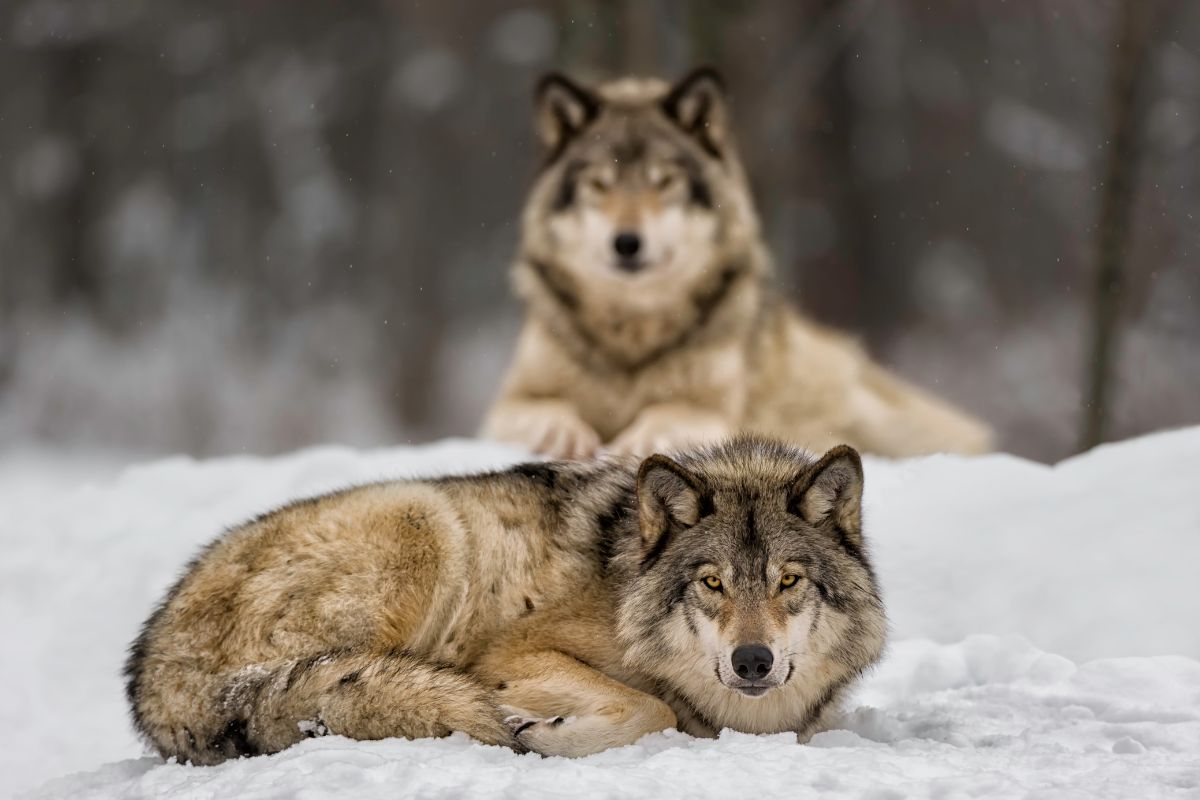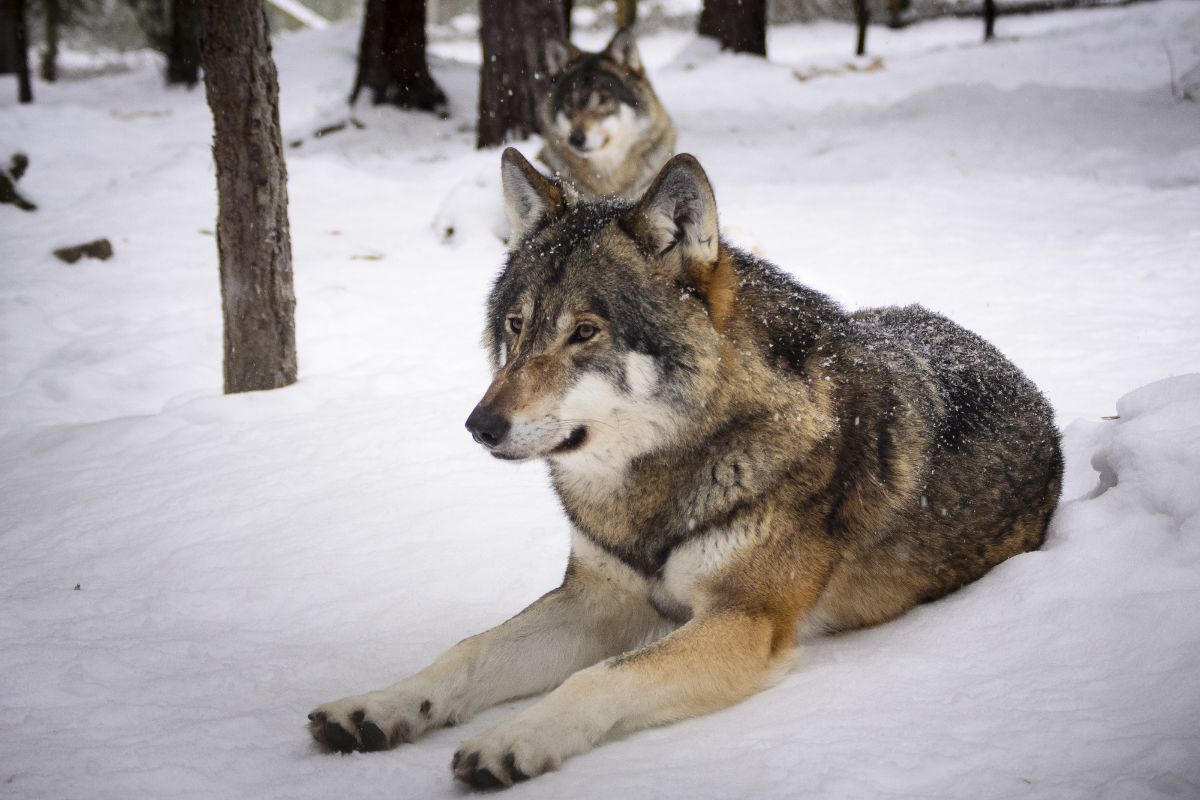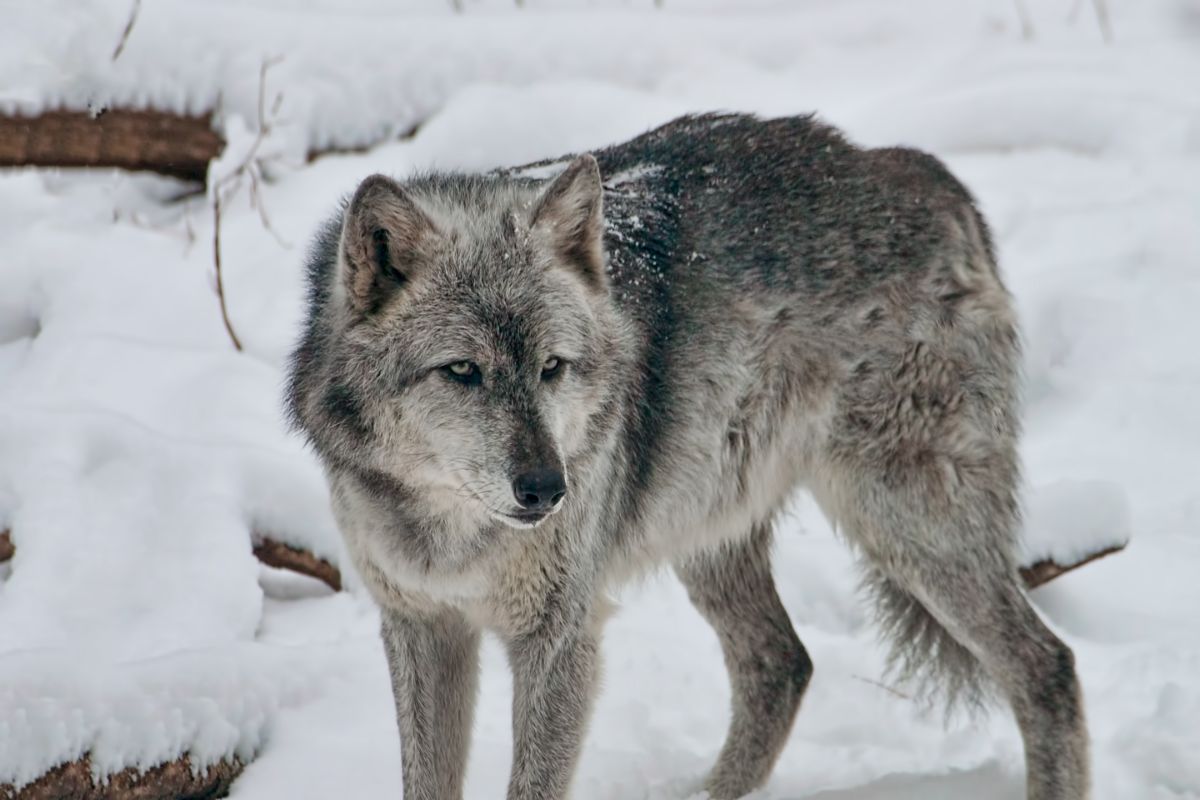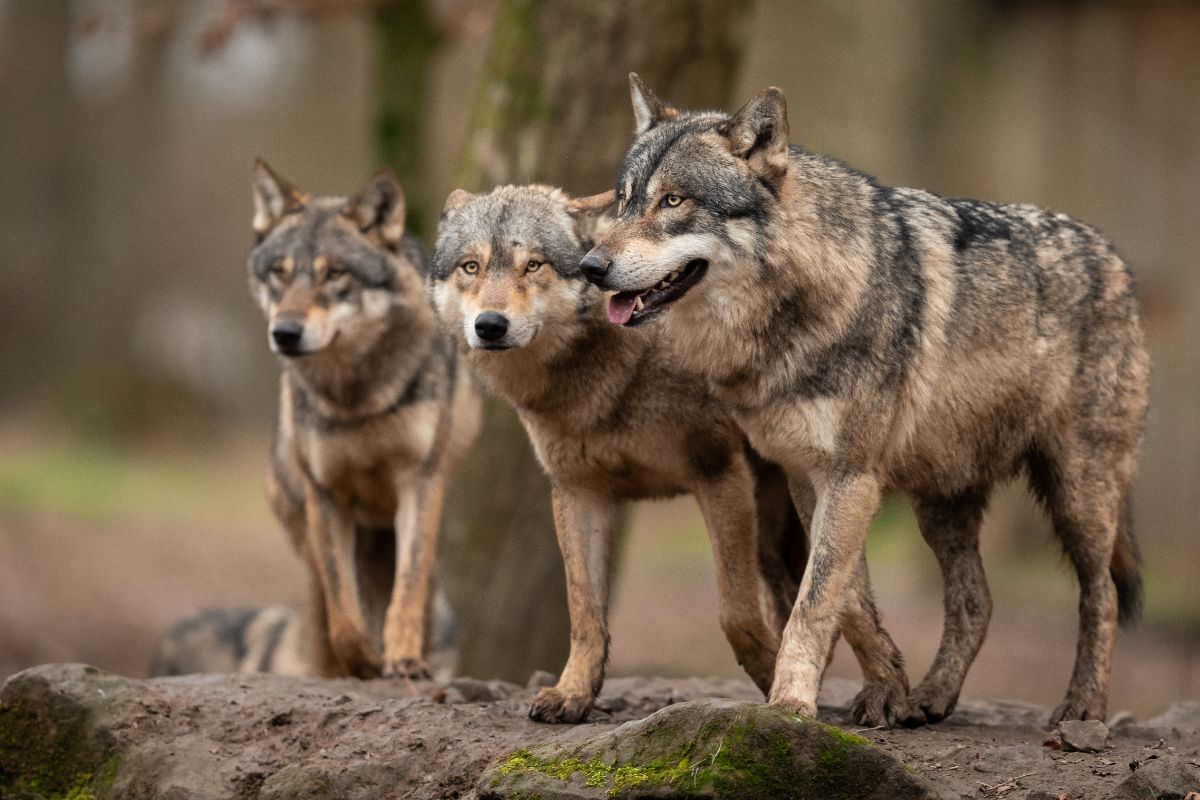Mexico’s lobo is a subspecies of the gray wolf and the smallest of North America’s gray wolf.
They were rooted out and extirpated to the near brink of extinction following a period in the mid-1900s where they suffered during sporadic encounters with humans and their livestock.
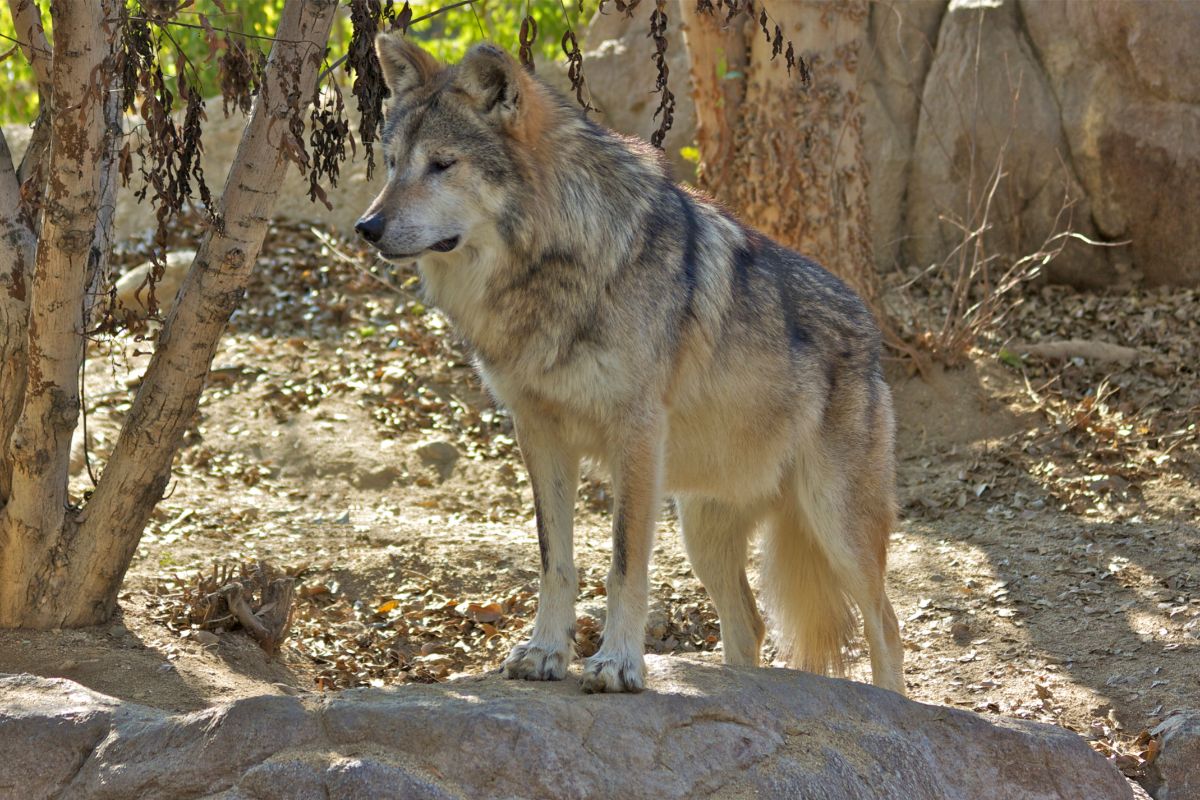
Trapping, livestock farming, hunting, and poisoning almost wiped them out yet after being listed on the Endangered Species Act, Mexico, and the United States came together to prevent the creature’s extinction.
Essentially they captured the remaining wild lobos and began a captive breeding and reintroduction program.
In this guide, we will look at ‘El lobo’, the threats that it faces, and its population recovery.
‘El Lobo’
Also known as the Mexican wolf, or Canis lupus bailey, ‘El lobo’ is distinguished from other wolves by its narrow skull and dark pelt. This is yellowish gray with heavy black shades over the back and tail.
The Mexico lobo can be traced all the way back to the first set of gray wolves that came into North America following the wiping out of the Berigingian wolf.
‘El lobo’ was well-regarded in Pre-Columbian Mexico and seen as a symbol of the Sun and war; they were even crossbred with dogs to produce loyal guardians and sacrificed in some religious rituals.
Threats To Mexico’s Lobo
The initial threat to Mexico’s lobo and one of the main reasons for their declining numbers was in a response to their livestock hunting.
As the cost of lost livestock increased, landowners fought back via a deadly combination of poison, guns, and traps. By 1927, Mexico’s lobo was seemingly extinct in New Mexico.
Livestock was safer but the population of the Mexican wolf was in serious danger, especially in the United States.
Further encounters involving the wolves were reported in New Mexico, Texas, and Arizona yet this was via Mexico, and the wolves were subsequently driven away or killed.
Similar tactics to drive away the wolves were adopted in Mexico and the creatures’ numbers nosedived in the 1930s and 1940s.
The wolves still remained but increasingly sporadically and in tiny numbers in Arizona in the late 1970s.
Thankfully, the Mexico lobo population remained in Mexico, partly due to ranching, predator removal, and human settlement which occurred in the southwestern American states.
The greatest threat to Mexico’s lobo population remains just the same as it was in the mid-1900s; humans.
While then, they were trapped and hunted, there remains a misconception and intolerance of the creature, even after being reportedly near wiped out.
Another threat is inbreeding as the genetic diversity of these Mexican gray wolves remains limited and only through careful management and monitoring can it improve.
Even now, Mexico’s lobo is still listed as endangered under the Endangered Species Act.
Population Recovery
If it was not for the collaboration between Mexico and the United States in 1976, there is a fair chance that Mexico’s lobo would not be around to this day.
The plan of the collaboration was quite straightforward, capturing the entire lobo population that remained in the wild to save it.

At the time, the population included one pregnant female and four male lobos. All of which were captured alive over a period in Mexico between 1977 and 1980 and subjected to a captive breeding program.
The program proved successful and their numbers increased with these captive-bred Mexico lobos being carefully released into certain recovery areas in New Mexico and Arizona.
Starting in 1998, their release was organized to help the wolves recolonize what was considered to be their historical range.
Back then there were only 11 Mexican lobos released back into recovery areas which seemed precarious.
The latest population numbers of Mexico’s lobos are encouraging. From those 11 Mexico lobos, their numbers have increased dramatically.
In 2021, there were a total of 350 Mexican lobos involved in captive breeding programs with 186 out in the wild. What is also interesting is that the wolves have remained in those states that they were released into.
Around 60% of those wolves were in New Mexico and the remaining 40% were in Arizona, typically it remains an even split though this has a slight preference for the more central state.
Perhaps five years ago, such numbers would have seemed hopeful. However, their population has seemingly doubled in those five years and this is only based on the minimum amount of wolves.
The numbers are only based on surveys that include wolf sightings which have been confirmed by the staff of the Interagency Field Team.
Final Thoughts
There is some hope that the population of Mexico’s lobos can continue to increase yet illegal shootings and poaching still remain issues that remain a threat.
GPS monitoring has been used to monitor the population of Mexico’s lobos though there are efforts to breed the creature in certain management facilities.
The existence of Mexico’s lobos will continue to be under threat from their compromised genetics and human intolerance yet intervention has proved successful before.
What also needs to be considered is how captive-born wolves are released into the wild. Specifically into a well-bonded pack as this can prove problematic.
With careful monitoring and planning, as long as the reintroduction of Mexico’s lobos is handled properly then there may be hope that they can no longer be considered endangered.
Frequently Asked Questions
Why Do Mexican Wolves Remain Endangered?
Thankfully, the population of Mexican wolves has grown, albeit slowly. There are three main reasons why they are still considered endangered.
Firstly, there is the issue of their compromised genetics which would be difficult to solve. There is also the reluctance to release further bonded pairs and individuals into the world.
Finally, there is human intolerance of the creature due to their sporadic hunting of livestock.
When Were The Mexican Wolves First Considered Endangered?
Before the bi-national breeding program between Mexico and the United States, the population of the Mexican wolf was in peril.
The creature was first officially considered endangered in 1976, though it is fair to say that its population was dwindling before this.
- What Do Squirrels Eat? Learn About Their Diet and Winter Survival - October 14, 2024
- What Do Raccoons Eat? Discover Their Diet and Eating Habits - October 6, 2024
- What do foxes eat? - October 5, 2024


